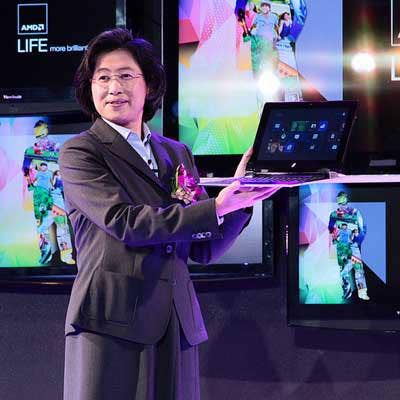AMD Sees 'Incredible Opportunities' With Next-Gen 7nm Chips

There are "incredible opportunities ahead" with AMD's next-generation, 7-nanometer processors as the company expects to take more server market share from archrival Intel, said CEO Lisa Su.
Su's remarks came Wednesday during the Santa Clara, Calif.-based company's second-quarter earnings call, where the company's upcoming 7nm CPUs and graphics chips, as well as its nascent EPYC server processors, dominated much of the discussion.
The second quarter, ended June 30, marked the company's best quarterly results in seven years, with revenue reaching $1.76 billion, a 53 percent increase from the same period last year, and net income climbing to $156 million, or 14 cents per share, compared to a loss of $7 million, or a loss of 1 cent per share, a year ago. AMD's stock price was up more than 5 percent after market-close Wednesday.
[RELATED: Intel's AMD Talent Raid Raises Partner Buzz Around GPU Blitz]
AMD began sampling its 7nm graphics chip, or GPU, with select customers in the second quarter and expects to start shipping the product later this year, Su said. AMD's 7nm EPYC server CPU, code-named "Rome," has also started sampling with select partners and will launch in 2019 while the 7nm client CPU will ship sometime after that, the CEO added.
"I do believe we have a very competitive position in 2019," Su said.
AMD's progress with its 7nm chip manufacturing process is significant because Intel has been struggling with its 10nm process, which is comparable to AMD's 7nm and has been delayed for multiple years because of manufacturing issues. A senior AMD executive said in June that Intel's challenges have created "a real tailwind" for the company.
Before his resignation in late June, former Intel CEO Brian Krzanich said at a shareholders meeting that he did not see the company's manufacturing issues as a competitive threat, adding that he believes the company's 14nm chips still have "a lot of leg room left in performance, along with our architectures."
During AMD's Wednesday earnings call, Su reiterated that the company projects to reach mid-single digits in the server market share by the end of the year and double-digits in the mid-term. The company's EPYC server chip line, which launched a little over a year ago, is now in over 50 platforms, including HPE's ProLiant DL325 Gen10 server, which Su said offers "significantly lower cost per virtual machine than the leading dual-socket competitor" — a reference to Intel.
Rick Gouin, CTO at Waltham, Mass.-based Winslow Technology Group, ranked No. 429 on CRN's 2018 Solution Provider 500 list, previously told CRN that while most of his customer base uses Intel, he has a number of mid-range customers that are starting to look at AMD's EPYC server chip for cost savings.
"Those types of products are starting to become more interesting to our customers because so many things are licensed by the socket," Gouin said.
Krzanich, Intel's former CEO, reportedly said to an analyst that Intel would lose server market share to AMD in the second half of this year. Intel later said that while the company expects a "more competitive environment," it's in a "great position to compete."
Su said a majority of the EPYC platforms have been shipping to multiple customers, with some deployments ranging from the hundreds to tens of thousands. That contributed to a 37 percent year-over-year growth in AMD's Enterprise, Embedded and Semi-Custom business to $670 million for the second quarter.
Su said EPYC sales and shipments have grown more than 50 percent sequentially. After seeing a longer qualification period with customers for the first-generation of EPYC, code-named "Naples," Su said the company hopes for the timeline to tighten with "Rome," the next-generation chip.
"With Rome, I think there is enhanced interest," she said.
Su said the company is aiming to increase EPYC adoption in the high-performance computing, data analytics and virtualized enterprise environment segments.
The company's Computing and Graphics business grew 64 percent year-over-year to $1.09 billion, driven by strong sales of its Radeon graphics products and "continued growth" of its Ryzen CPU products. At the same time, the business saw a 3 percent dip from the previous quarter, which AMD attributed primarily to a dip in revenue from GPU products in the blockchain market.